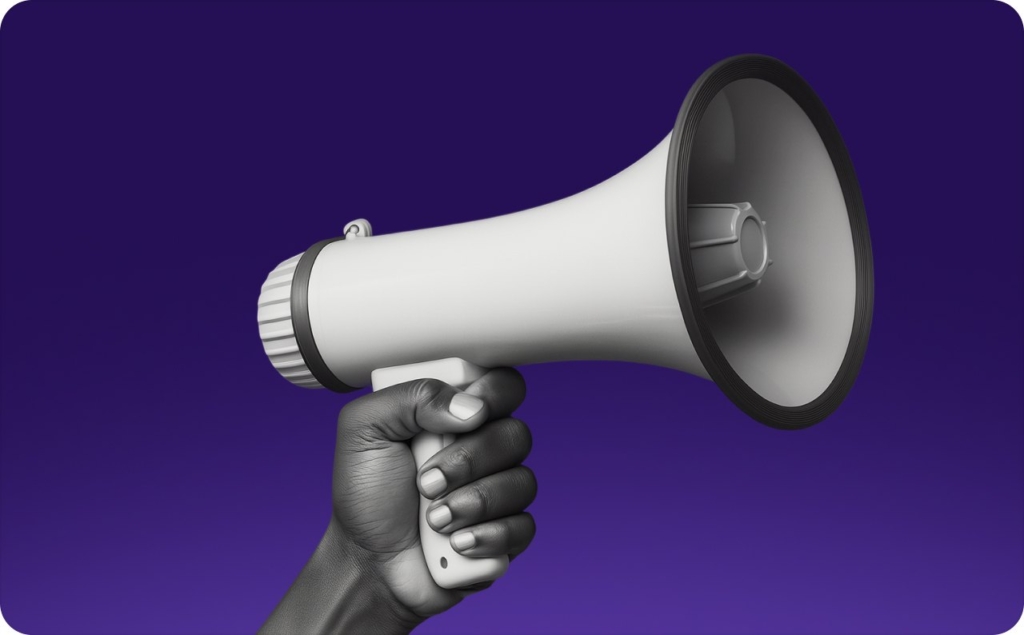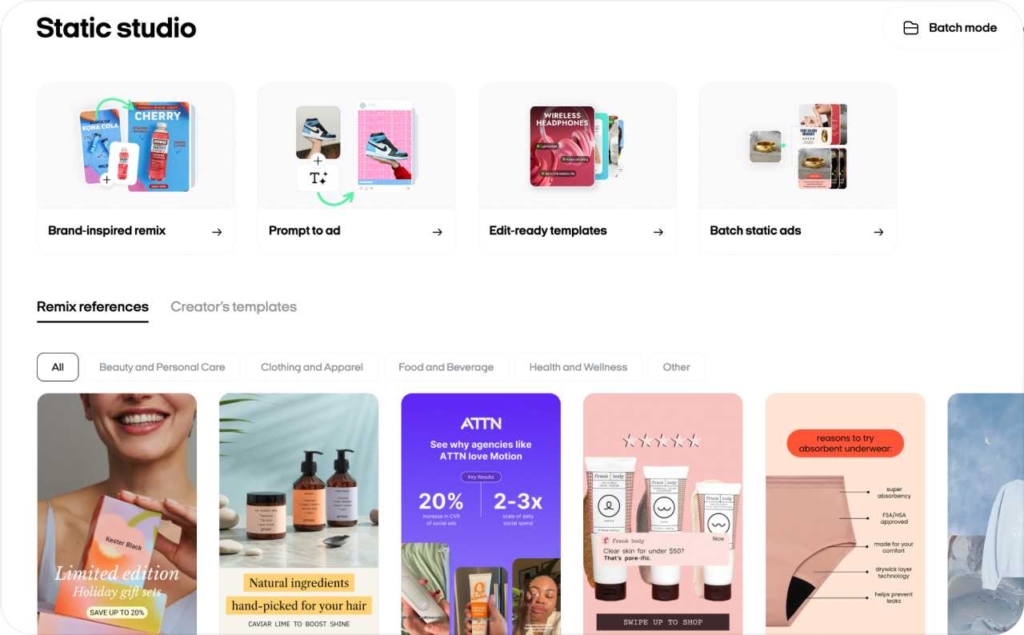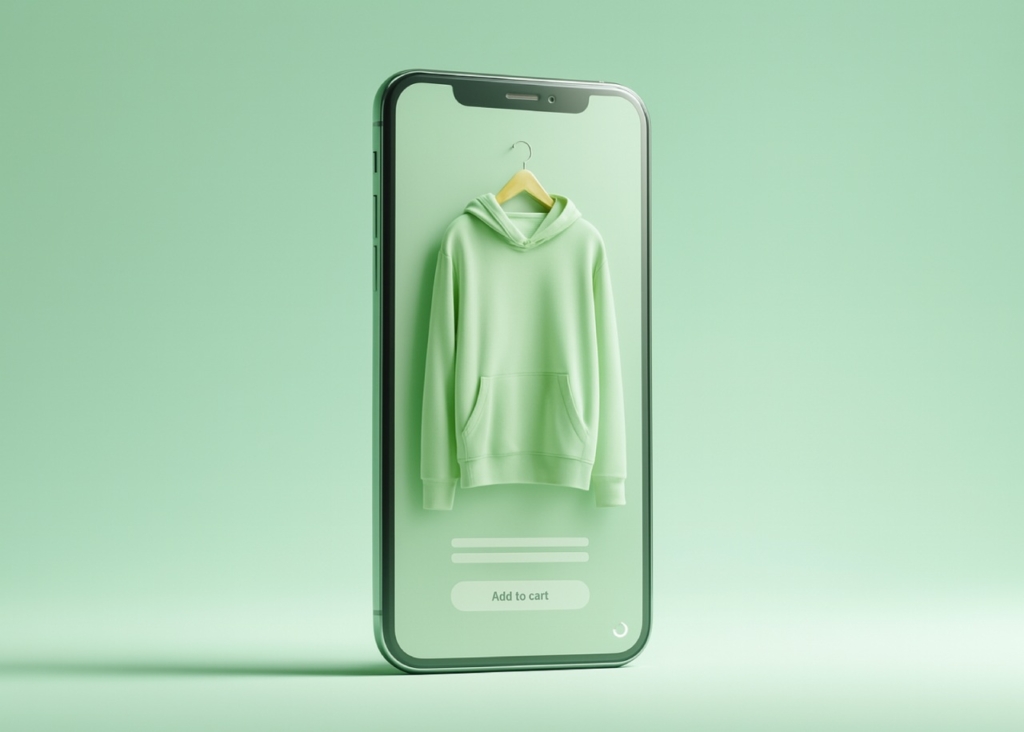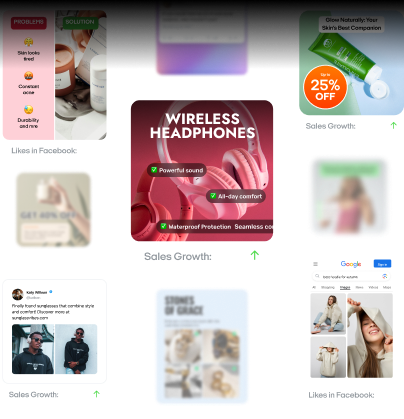7 Steps to start audience based marketing without a big budget
Kickstart your audience based marketing strategy with 7 budget-friendly steps. Perfect for startups and small brands.
Too many marketers waste budget on ads that miss the mark, either reaching the wrong people or casting too wide a net. The result is high spend, low return, and flat campaigns.
Audience-based marketing takes a more data-driven approach, helping you connect with customers who truly care about what you offer. Instead of casting a wide net, you focus on precision targeting and personalized campaigns, so you spend less while increasing your marketing ROI.
The adoption of personalized marketing is already gaining traction. While about 75% of brands are aware of smart recommendations based on past user behavior, 60% are actively using them. This shows a growing shift toward automated, intent-driven messaging that works across channels.
In this guide, you’ll discover how to move past guesswork and embrace behavior-based segmentation that aligns perfectly with user intent. You’ll also learn why tapping into consumer behavior boosts targeting efficiency, reduces wasted spend, and strengthens customer relationships over time.

What audience-based marketing is and why use it
Audience-based marketing is a data-driven strategy that groups consumers by behavior or intent, like browsing history or past purchases, instead of broad demographics. It supports privacy compliance under GDPR and CCPA by using consented or aggregated data for smarter, more relevant audience segmentation.
Statista reports that marketers use AI and ad tech to deliver more personalized experiences while navigating stricter data regulations. Audience-based marketing helps balance personalization with privacy compliance, making it easier to build trust without sacrificing targeting precision.
Use audience data to improve campaigns
You run an eco-friendly shop and spot interest in reusable products through website analytics and purchase intent data. You build a “green shopper” audience segment and launch targeted ads on Facebook or Google, boosting conversions and cutting waste by focusing on sustainability-minded consumers.
Audience marketing vs. People-based marketing
Audience-based marketing targets groups of people who share similar traits or behaviors. You don’t need to track individual IDs, which makes it easier to reach a large pool of potential customers who’ve shown interest in what you offer.
People-based marketing focuses on identifying individuals across devices through logins or email addresses. It’s perfect for hyper-personalized campaigns or precision retargeting. If you want direct one-to-one personalization, people-based marketing fits best. If you aim for broader segmentation without explicit IDs, audience-based marketing is the way to go.
Why audience-based marketing works for new customers
Audience-based marketing is powerful at awareness and mid-funnel stages. People are open to discovering new brands when they’re in the exploration phase, reading reviews, researching solutions, or checking out pricing. Show them tailored ads or content that matches their interests to stand out from competitors.
Lookalike audiences also come in handy. Once you pinpoint your best customers, you can find people with similar behaviors or demographics and expand your reach across social ads, email campaigns, and other channels.
Achieve better results without breaking trust
Speaking to segments like “green shoppers” or “home-office entrepreneurs” drives stronger engagement than generic ads. It boosts ROAS, lowers CPC, and builds trust by using consent-based audience insights, aligning with privacy laws while keeping your targeted messaging relevant and respectful.
Build a winning audience-based marketing strategy
Audience-based marketing strategy avoids one-size-fits-all tactics and focuses on five pillars: verified segmentation, privacy compliance, personalized messaging, cross-channel integration, and actionable metrics — delivering better campaign insights, higher conversions, and stronger customer trust.

Photo source: Nike
Group the right people in the right way
Start with your targeted segmentation strategy. Use first-party data like site visits, email engagement, and purchase history — plus third-party data if needed — to find shared behaviors. Group users into segments so you can deliver the right message to the right people at the right time.
Make sure your data is clean and up to date
Clean, accurate data makes all the difference. If you’re mixing outdated records or duplicates, your campaigns will suffer. That’s where tools like Google Analytics 4 or a Customer Data Platform come in handy. They help you catch errors early, keep your insights fresh, and feed your segments into the rest of your marketing channels.
Keep customer data safe and private
Mishandling personal data can quickly erode brand trust. With laws like GDPR and CCPA, respecting user privacy is a must. Use cookie policies, clear opt-outs, and aggregated data that avoids personal IDs. These privacy-compliant practices don’t just protect you — they build stronger, lasting relationships with your audience.
Speak directly to each customer with personalized messages
After confirming privacy rules, focus on personalized messaging. According to Forbes experts, tailoring content to each recipient’s preferences can increase email open rates by 26%. That’s a big lift when you’re trying to break through inbox clutter or stand out in social feeds.
Keep your branding and tone consistent across channels, too. If someone gets a personalized email that suggests eco-friendly cleaning supplies, seeing a similar ad on Instagram reinforces the message powerfully.

Photo source: Coca-Cola
Keep your message consistent on every channel
Today’s shoppers switch between devices. That’s why cross-channel integration matters. Using a CRM or marketing automation platform, you can deliver consistent messages across email, YouTube, or Instagram, and track which touchpoint led to conversion by syncing campaign data across channels.
Track the right numbers to know what’s working
Finally, make sure you’re measuring what truly matters. Clicks or likes are a start, but you’ll learn a lot more by watching how each segment responds to specific promotions or creative assets.
Consider metrics like return on ad spend, repeat purchase rates, or how many people sign up for your loyalty program. If one segment has a sky-high open rate but never buys, you know it’s time to tweak your offer. Over time, you’ll refine your precision analytics, spot patterns, and adapt your campaigns for better results.
How it all comes together to boost your growth
When you put these components into practice — collecting clean data, segmenting wisely, respecting privacy, personalizing your messages, integrating across channels, and tracking key metrics — you create a system that evolves with your customers.
For example, if you run a fitness brand, you might set up a “Yoga Enthusiasts” group based on people who check out yoga products and watch related videos on your site. You then deliver consistent, relevant messages about beginner yoga kits and track conversions week by week.
Your step-by-step plan to run targeted marketing
You don’t need more traffic — you need better targeting. This step-by-step plan helps you build an audience-based marketing strategy that actually performs. By using data-driven insights, behavior-based targeting, and smart cross-channel marketing tactics, you’ll stop guessing and start converting.
1. Know who you want to reach and what you want to achieve
Start by figuring out who you want to reach and what success looks like. Go beyond demographics. Look at consumer behavior, ike cart abandons, email clicks, or time-on-page, to uncover friction points. If you’re running a B2B SaaS campaign, don’t just blast ads — target people most likely to book a demo. Your goals should align with audience insights and how your offer solves for it.
2. Use the right data to find key patterns
Next, gather the right user data to find patterns you can act on. Pull insights from your CRM, email engagement, or social analytics. Even lightweight tools like Mailchimp or HubSpot’s free CRM can centralize what matters: who’s engaging and why.
Cluey, an online tutoring brand, used first-party data from HubSpot alongside Google’s shared audiences. The result was a 190% increase in ad effectiveness and a 17% drop in cost per conversion. That’s what happens with interest-based segmentation when insights and marketing automation work together.
3. Group your customers into small and simple segments
Use your data to shape clear, actionable buyer personas. Think of these as snapshots of your real audience, like “Budget-Minded Students.” Each persona should center on one core pain point, motivation, and potential barrier to purchase. Start small with 2–3 segments. Over-segmentation creates more noise than clarity.
4. Write messages that feel personal
Now that you know your audience, speak to them directly. Craft personalized content that taps into each group’s values. Push bundle deals and discounts for students watching their budget. Test everything — from subject lines to social headlines. Quick A/B tests will show you which ad creative gets clicks and which one flops.
5. Choose the best platforms to reach each group
Choose the channels where each segment already lives. To reach professionals, go with LinkedIn. For Gen Z, use TikTok, YouTube, or Snapchat. Your cross-channel marketing plan should map personas to platforms because relevance improves reach. When you match message, format, and audience, performance climbs and scaling becomes easier.

6. Test what’s working and keep improving
After launch, track campaign performance metrics closely. Let tests run 7–14 days to collect meaningful data. If CPL rises on Facebook, adjust your creative or audience filters. Use KPIs like ROAS to guide next steps. Optimization isn’t a finish line — it’s a continuous feedback loop for smarter marketing decisions.
7. Check your results and don’t overthink your segments
After the dust settles, analyze your results to see which segments performed best and whether any niche groups delivered unexpected wins. Watch for over-segmentation: if you’re managing more than five, simplify. The goal is actionable segmentation that powers smart digital execution and business results.
A strong audience-based marketing strategy is about more than slicing your list. It’s about employing user behavior to create relevant messages, choosing the right places to show them, and continuously optimizing for results. Focus on user behavior and harness robust digital analytics to stay agile and drive sustainable growth.
Use Zeely AI to make ads faster and grow your campaigns
Scaling campaigns as a small business is tough — limited budgets, tight deadlines, and costly UGC don’t help. Zeely AI lets you create static ads in minutes using templates, or combine video ads with AI avatar ads. It helps you move faster, stay on budget, and boost digital campaign growth with ease.
How to create a static ad with Zeely AI
Step 1: Add your product link
To create an AI static ads just drop in your product URL, and Zeely AI instantly pulls key data — like images, descriptions, and product specs. You can manually add product info too. Once saved, your product becomes a reusable asset across all future campaigns, streamlining your entire campaign scaling process.
Step 2: Generate your static ad
Select the product, pick a template from Zeely’s ad library, and hit Generate. The AI uses your content to build an ad optimized for performance and audience appeal.
Step 3: Review and refine
Your ad appears in seconds, ready to go. Customize the copy, swap visuals, and tweak layout settings using Zeely’s built-in editor — no design experience required. This makes AI ad for small businesses faster and more flexible.
Step 4: Save and go
With one click, your static ad is saved and campaign-ready. It stays stored in your account, ready to deploy across your audience targeting with AI campaigns.

Why Zeely AI beats ugc creator costs
User-generated content is powerful — but it’s not always affordable. UGC creators typically charge $150–$300 per video. With Zeely AI’s Starter plan, you can generate up to 8 high-quality AI UGC ad creator for just $29.
How to create a video ad with Zeely AI
Step 1: Add your product info
Like static ads, just enter a product link or details manually. Zeely pulls everything it needs to generate smart, engaging video content built for your brand.
Step 2: Set up your video
Choose a template, an AI avatar, a voiceover script, and background music. These customizable tools help you craft videos that feel personalized and aligned with your audience segmentation strategy.
Step 3: Let Zeely AI handle the rest
Click Render, and your video enters the queue. Most ads are fully processed and ready to use within 12 minutes. You’ll have a polished, ready-to-run asset built for SME ad optimization across social and display platforms.
Zeely AI isn’t just another digital advertising tool — it’s a fast, flexible, and affordable way to generate campaigns and simplify marketing efforts. With automated ad creation and seamless integration with your audience-based marketing strategy, Zeely gives small businesses a real edge.
What you should do next to grow with audience-based marketing
Audience-based marketing isn’t guesswork. By using behavioral insights and data-driven strategies, you’ll reach people who genuinely care about your brand. The result is personalized messaging, less wasted ad spend, and a foundation for ongoing performance gains in your digital marketing efforts.
If you’re ready to try AI-driven ad creation, sign up for Zeely. It supports ad creative automation but also keeps the personal touch essential to growth acceleration. By using Zeely AI to optimize creative assets, you’ll free up time to refine your audience strategy, test new offers, and explore more digital targeting opportunities.
Here’s how to activate your next phase of marketing improvements:
- Assess segmentation accuracy. Make sure each segment aligns with real-world purchase behavior, user preferences, or past interactions. Accurate segmentation fuels stronger conversion rates.
- Refine creative and messaging. Tailor content so each audience sees messaging that speaks directly to them. Track key performance indicators metrics like click-through rate or cost per acquisition to measure impact.
- Leverage AI tools. Integrate modern solutions like Zeely AI to handle repetitive tasks and scale creative content, letting your team concentrate on strategy and ROI improvement.
- Monitor and iterate. Run A/B tests, analyze results, and make data-driven adjustments. This continuous feedback loop keeps campaigns fresh and positions you to innovate in digital marketing.
Following these steps sets a foundation for campaign success, more relevant ads, and a brand experience that resonates with your audience. Now’s the time to see how ad creative automation with Zeely AI can keep you agile, cut costs, and deliver lasting results in your audience-based marketing journey.
Frequently asked questions about audience-based marketing
1. What is the main goal of an audience marketing strategy?
You want to deliver highly targeted campaigns that speak to your audience’s real interests. By using data-driven insights and segmenting people beyond simple demographics, you boost your marketing ROI, cut wasted ad spend, and deepen customer connections.
2. What data do you need for effective audience-based marketing?
You’ll need first-party data like site behavior, email engagement, and purchase history. Tools like GA4, Mailchimp, or HubSpot CRM help organize these insights. Add intent-based or interest-based data to refine your audience segmentation. A stronger, well-rounded data mix leads to better conversions.
3. How is audience targeting different from behavioral targeting?
Audience targeting groups people by interests, lifestyle, or demographics. Behavioral targeting focuses on real-time actions, like cart abandonments or product views, and responds instantly with personalized ads. Audience targeting is broad and interest-focused. Behavioral targeting is more action-based and immediate.
4. Which metrics show if your campaigns are working?
Keep an eye on conversion rates, return on ad spend, click-through rates, and cost per acquisition. For a bigger picture, track lifetime value or repeat purchases to measure long-term success. By reviewing these KPIs in tools like GA4, you can find areas to improve and keep your targeted campaigns on track.
5. How often should you update your audience segments?
Refresh your audience segments at least quarterly — or when major changes occur, like a product launch, seasonal spike, or shift in user behavior. Staying updated keeps your targeted content relevant. Use digital analytics to spot trends and know when your segmentation strategy needs adjustment.
6. How to stay compliant with data privacy laws?
Laws like GDPR and CCPA require clear data practices. Tools like OneTrust or Cookiebot can handle cookie banners and consent tracking to help you stay compliant. Balancing privacy compliance with customer insights helps you build trust while still running effective, personalized campaigns.
7. Why do clear segments and best practices matter so much?
Clear audience segments eliminate guesswork and help you focus your budget on high-converting users. This boosts campaign performance, improves ROI, and streamlines data management. Following targeting best practices drives better outcomes and fuels continuous improvement across your digital marketing channels.
Also recommended



